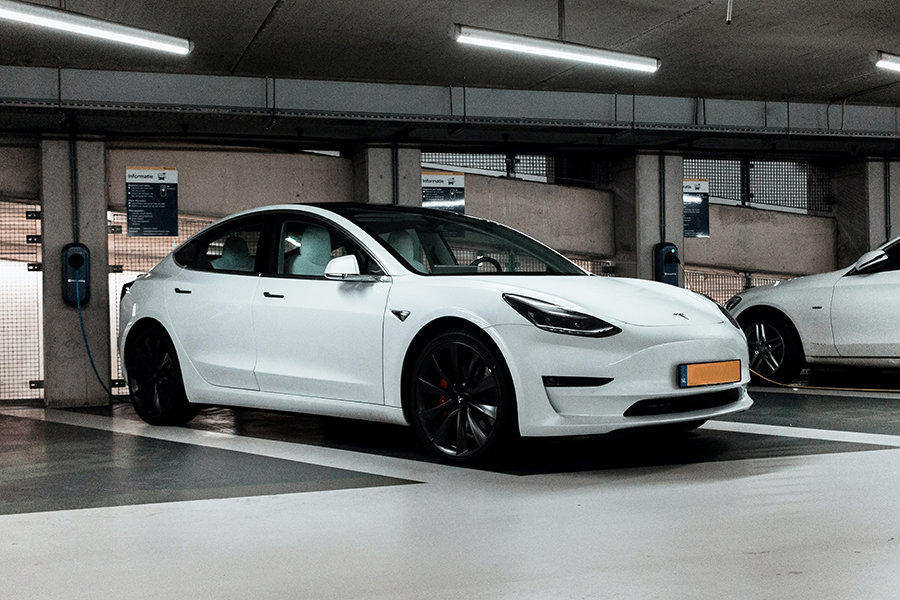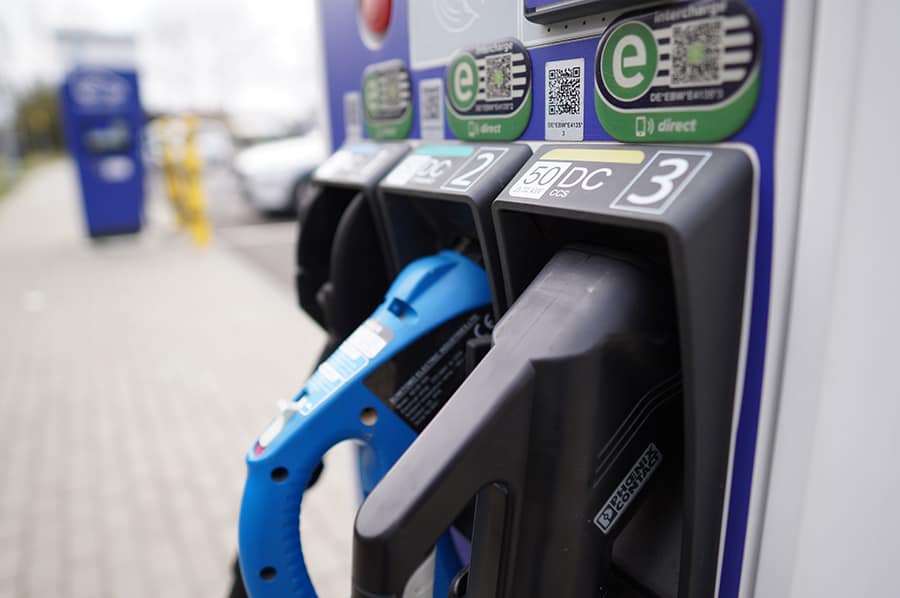There are 3 EV charging station types that you need to learn about, each with its own set of pros and cons. Here they are:
- Level 1 charging
- Level 2 charging
- DC fast charging (Level 3 charging)
We’ll explore each of them in more detail shortly, but first, let me lay down the groundwork with a quick peek at the basics:
| Level 1 Charger | Level 2 Charger | Level 3 Charger | |
|---|---|---|---|
| Cost per charge | $ | $$ | $$$ |
| Charging speed | Slow | Medium | Fast |
| Primary location | Residential | Residential, Public | Public |
| Sample power rating | 120V, 15A, 1.4kW | 240V, 40A, 7.7kW | 480V, 100A, 48kW |
Level 1 charging
Level 1 chargers are your regular ol’ single-phase 120-volt power, the same kind you’ve got in your house. Just plug your EV’s power cord into your wall outlet, and you’re good to go. You don’t need to splash out on extra installations. Still, if you want to dedicate a 120V outlet just for charging, that’s cool too. But don’t expect any power boost.
Fair warning, though—Level 1 charging is the tortoise of the EV charging world. If you’re in a rush, this probably isn’t the best fit. However, it’s a no-fuss option if you don’t want to mess with additional electrical gear.
Bottom line: Level 1 chargers are perfect for home use if:
- Your daily grind is short, and you’re not a road warrior
- Your workplace has a Level 2 charger, so you can keep home charging minimal
- Your garage has a standard outlet, because extension cords aren’t an option for apartment dwellers
Pros
- Easy on your electric bill
- No need for extra installations
- Easy on your wallet
- Charge up anywhere with a standard outletbnnb
Cons
- Sluggish charging time

Important Note: Level 1 charging is like a slow drip for your battery. For example, a Tesla Model 3 can get around 30 miles of charge per night. But if you’ve got a high-capacity Tesla battery, it might take up to 3 days to fill up from empty.
Level 2 charging

Level 2 chargers work with 240-volt single-phase power, just like your clothes dryer.
These bad boys charge faster, but you can’t just plug ’em into a 120-volt outlet. You’ll need to buy and install a separate Level 2 charger, along with the required electrical infrastructure.
The average installation cost runs between $750 and $3,000, depending on how complex the job is. If the charger is close to your electrical panel, you’ll save some cash. But if it’s 50 feet away, expect to pay more for extra wiring, conduits, and maybe even trenching.
Level 2 chargers are common in homes and around town. Check out how they stack up against Level 1 chargers, using ChargePoint’s data:
| Level 1 Charging | Level 2 Charging | |
|---|---|---|
| Electric and Power Specs | 120-volt, 20 Amp circuit, 1.4 kW | 208 to 240-volt, 40 to 50 Amp circuit, 6.2 to 7.6 kW |
| Time to fully charge an EV with a 100-mile battery | 17 to 25 hours | 4 to 5 hours |
| Drivers served per station per day | 1 | 3 to 4 or more |
Pros
- More energy-efficient than Level 1 chargers
- More power actually goes into your battery, instead of turning into heat
- Faster charging times, typically 5 to 7 times faster than a Level 1 charger
- Works with all electric vehicles
Cons
- Initial installation cost
- Bigger impact on electric utility peak demand charges compared to Level 1 chargers
- Less flexibility in charging location, since the charger stays put in your home
DC fast charging (Level 3 charging)

DC fast chargers, or Level 3 chargers, are just as their name suggests—fast! They run on 480-volt three-phase power to give you that extra oomph.
But hold up, not all EVs can handle DC fast chargers. Plus, they’re not meant for your home; they’re better suited for industrial use.
Your house likely has a 120/240-volt single-phase 100 Amp electrical service. It’s way easier to upgrade your service to 200A than to ask for a brand-new 480-volt three-phase power service. Most utilities won’t even hook you up with 480-volt power, even if you’re ready to write that check.
If you’re a Tesla owner, you’re probably familiar with their supercharger network. Superchargers are DC fast chargers with industrial-strength AC to DC converters. These converters bypass EV onboard charger limits, so you can charge up faster.
Tesla’s got your back with destination chargers, too. These Level 2 chargers can be found at various public spots, making life easier for all drivers. You can check out the cost to charge different Tesla models here.
Pros
- Faster charging time than Level 2 chargers
- Closest thing to the fuel-up time of a gas-powered vehicle
- Great for long-distance trips
Cons
- Higher charging cost than Level 1 and Level 2 chargers
- Frequent use of Level 3 chargers can lead to increased battery degradation due to the extra heat generated

Important Note: DC fast chargers can get your battery up to 80% in about 30 to 60 minutes. But once you hit 80%, switch to a Level 2 charger if you can. The last 20% of charging with a Level 3 charger isn’t much faster than using a Level 2 charger, but it’ll cost you more.
Want to learn more about EV charging times? Check it out here.
Conclusion
Each type of EV charging station has its own set of pros and cons. You gotta find what works best for you and your lifestyle.
In my experience, it’s all about mixing it up with different charging stations. When I design commercial projects, I usually include a blend of Level 2 and 3 chargers. This way, we’re ready for anything.
One day, you might be cool with slow charging for a short commute. But the next day, you might need a quick full charge for a long-distance adventure.
Which EV charging station types do you use at home or work? Got any gripes about the ones you’re using?
